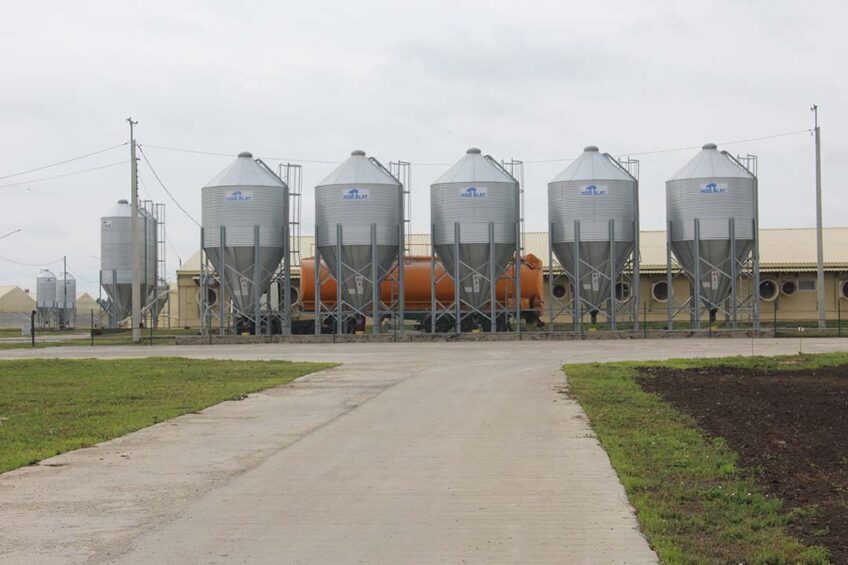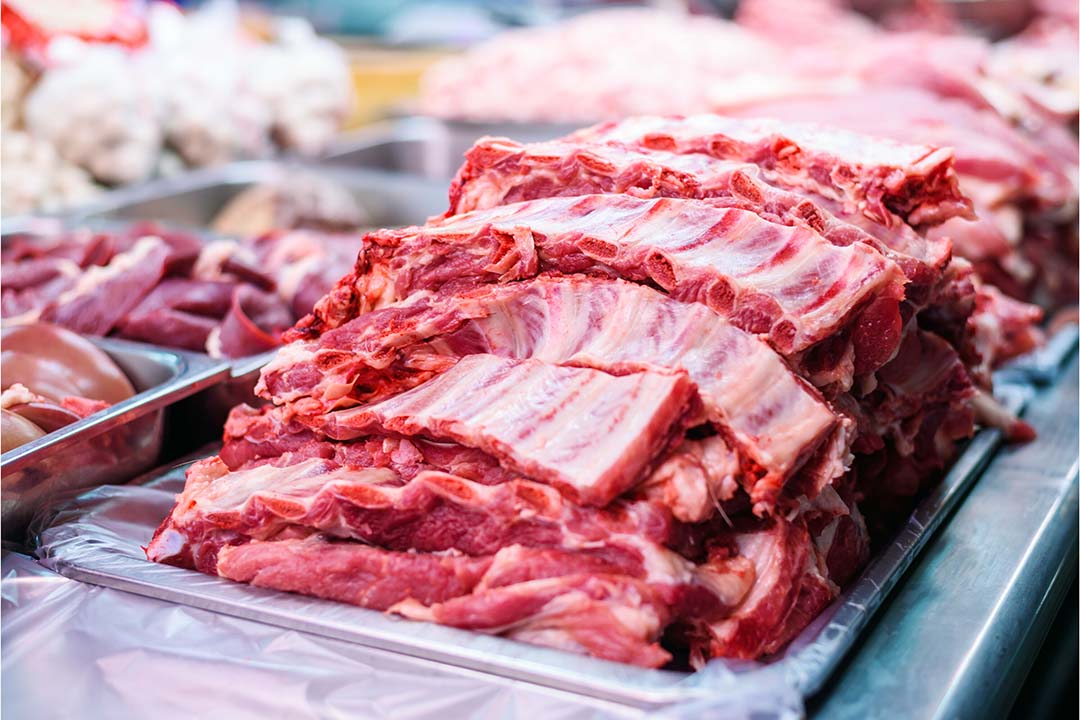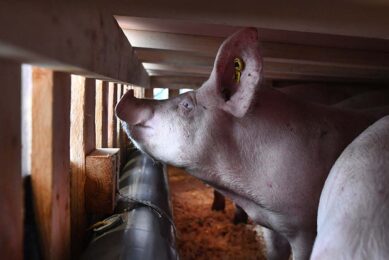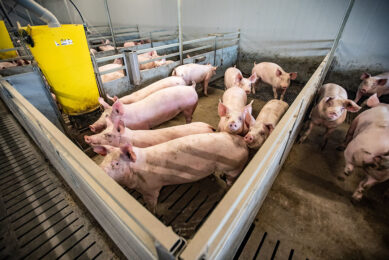Russia’s pig industry is at a crossroads

Soaring pork consumption on the domestic market and prospects of forging stronger trade ties with China seemed to secure a bright future for Russian pig farmers. Reality, however, is far more complicated. Will domestic consumption continue to soar and how reliable are export opportunities in an uncertain world of conflict and trade bans?
Exact figures were not available in late December 2023, but all signs pointed towards Russia’s pig exports being on the road to recovery. That happened after a far worse 2022, when exports dropped by at least 10%. The positive outlook was shared by Yuri Kovalev, general director of the Russian Union of Pork Producers (RUPP), at the conference Agrotrends Russia 2023–2024, early December 2023.
For the whole of 2023, Russia’s estimates were to have exported 250,000 tons of pork, worth US$ 550 million, Kovalev said. In 2022, exports stood at 170,000 tons.
Domestic consumption nearly exhausted its potential
For Russia’s pig farmers, exports are the only way to keep production growing, Kovalev asserted. Domestic consumption, which showed an unprecedented growth rate over the past two years, has nearly exhausted its potential.
Although Kovalev described the Russian pork export as “well-diversified,” this is not entirely correct. While, technically, Russia exports pork to 11 countries, the lion’s share lands in only 2. In the first half of 2023, Vietnam imported 46,000 tons of Russian pork and Belarus 41,200 tons. Other markets have far less importance, as the third largest importer, Kazakhstan, purchased only 4,200 tons of Russian pork.
Benefiting from crises
Growth in Russian pork exports is primarily attributed to beneficial trade regimes and, surprisingly, African Swine Fever (ASF). Russia shares a common customs space with Belarus, allowing its farmers to sell pork to its western neighbour almost as easily as on its own market. In the meantime, the Belarussian pig industry has been in a downturn in the past two years.
Since 2021, the pig population in the country has dropped by 11% or 290,000 tons, Alexander Lukashenko, the Belarussian president, disclosed in September 2023. To some extent, the problem is believed to be associated with ASF, though it is hard to say for certain, as the country has been criticised by European officials for not being transparent in terms of fights against the disease.
Russia has seemingly benefited from the devastating ASF outbreaks, which decimated the Vietnamese pig industry in 2019, prompting the country to nearly quadruple pork imports.
Russia is the leading pork supplier in Vietnam, with Russian products entering the market at zero duty. The world’s leading exporters remain at a tariff disadvantage in Vietnam compared to Russian pork. For instance, US pork is subject to a 10% import duty, EU pork to 9.4%, and Canadian pork to a 5.6% duty.
However, the situation will not last forever, as tariffs continue to phase out to zero under the EU–Vietnam FTA and the Comprehensive and Progressive Agreement for Trans-Pacific Partnership.
Weaning off dependence on imported pork
The bad news for the Russian exporters is that Vietnam and Belarus also want to wean off their dependence on imported pork. By 2025, the Vietnamese government wants to establish “10–12 major linked production chains” in the pig industry, ramping up pork production, and compensate for the damage incurred by ASF outbreaks.
In Belarus, Lukashenko has also demanded turning the tide in the industry and putting new modern pig farms in operation in the next few years. On the Chinese market, Russian pork will have to compete with imports from Europe, the United States and Brazil. It remains to be seen how it would perform in the face of stiff competition.
To take a place on the shelf in foreign retail, to win the trust of local consumers is a matter of colossal work and a huge investment
A looming threat
The Russian government has recently hammered out a 6-month ban on poultry meat exports. The move followed price turbulence in the broiler meat market triggered by bird flu outbreaks and rising production costs. Russia may suffer severe reputational and economic losses from the export ban, Sergey Yushin, executive director of the Russian National Meat Association, commented. “Sometimes supplies are made at a loss just to enter foreign markets and gain a foothold out there. We are fighting there with the world’s largest producers and competitors, such as the United States, the European Union, Brazil, Argentina and Thailand,” Yushin said.
In addition, some Russian products are exported under long-term contracts to retail chains.
“To take a place on the shelf in foreign retail, to win the trust of local consumers is a matter of colossal work and a huge investment. If we are unpredictable in terms of our supplies, they [foreign retailers] simply will not work with us at all,” Yushin added.
In the past years, the Russian authorities showed no reluctance to restrict food exports in order to protect the domestic market. During the logistics chaos caused by the COVID-19 pandemic, the Russian government restricted grain exports to tame domestic food inflation, despite protests from leading grain exporters, who also warned about losing big customers.
“[Pork] export must be treated as a sacred cow,” Kovalev said, addressing fears looming in the pig industry since the poultry export ban was announced. “A [pork] export ban would be a mere catastrophe.”
Logistics hamper exports
In 2022, Russian pork exports to Vietnam plummeted because of logistics turmoil, as a departure of Western firms from the country led to several painful consequences, in particular, a container shortage, Kovalev said.
This year, exports rebounded as the logistics issues were largely solved, Kovalev added. However, it would be too optimistic for Russian farmers to consider the logistics issue as fully overcome. Market players in several sectors of the Russian economy complain that logistics is not just expensive, but also makes Russian goods uncompetitive on the global market.
For instance, Russian dairy exports are associated with logistics costs twice as high as those of their European competitors, Anatoly Losev, general director of Russian dairy processor GK Molvest, estimated.
Logistics and supply chain costs
A source in the Russian meat industry who wished to stay anonymous commented that logistics costs broadly vary depending on the direction. While there are no problems with delivering goods to countries such as Turkey and United Arab Emirates, as well as in countries within the Commonwealth of Independent States (the former Soviet Union), things appear to be tricky when dealing with those far abroad.
In addition, the cost has risen across the supply chain, meaning insurance costs Russian exporters more than before, carriers also require a premium when dealing with Russian cargo, and financial settlements also require using various intermediates and third-country banks, according to the source. All these factors are piling up, pressuring the Russian export opportunities.

A shaking pillar
Over the past 2 years, rising domestic pork consumption has been the central pillar of the Russian pig industry’s growth. In 2022, Russian pork consumption jumped by 6% or 250,000 tons, the strongest 1-year growth in the past decade. There is no secret what drives this trend.
“About 500–700 billion roubles (US$ 5.5–7.5 billion) were paid [by the Russian authorities] to the poor [in 2022]. This did not make them richer, but it allowed them to spend this money on food, primarily pork, given that its price dropped,” Kovalev explained earlier in 2023.
Indeed, thousands of Russian households benefited from ample social programmes and exceptionally high payments for the Russian military in the past couple of years. However, given mounting economic challenges, it is doubtful that the Russian budget will keep pace with its social aid programmes for much longer.











